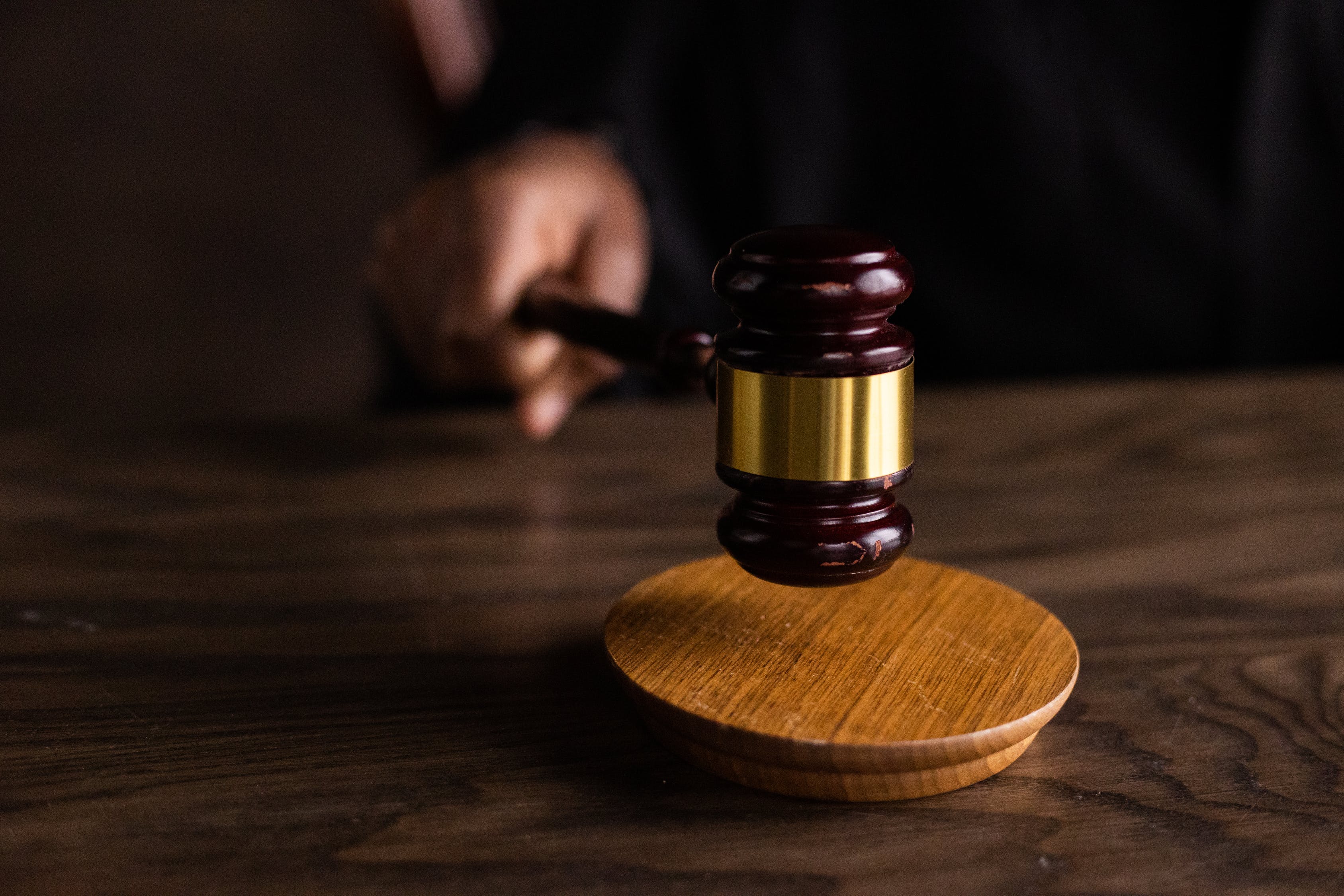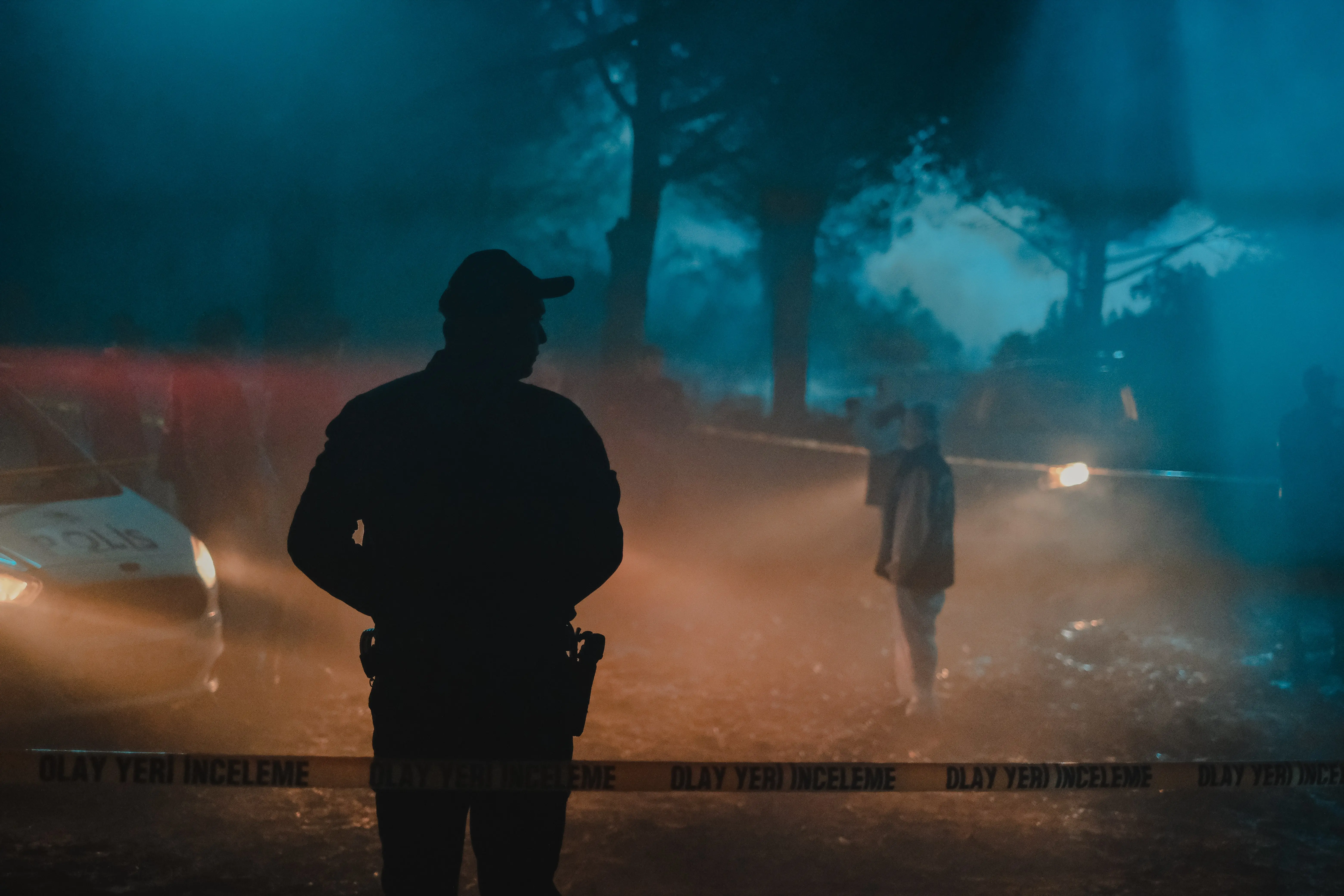Part 1: 4th Amendment
In 1791 the 4th amendment was made to the American constitution to protect individuals and their property from unreasonable seizure and searches. Under the law, searches and seizures required warrants issues after probable cause is proven through affirmation or by oath (Vile & Hudson, 2012). The first part of the capstone project traces the evolution of the law and applies it to the case study.

Part A
The notion that citizens need to be protected from unlawful searches is entrenched in English history. Judge Edward Coke set the first precedent in the 1604 landmark Semayne’s Case that deemed search and seizure unlawful even when conducted by representatives of the King. However, lawful searches were acceptable, and the Semayne case set the first precedent in recorded history (Johnson, 2009). In 1765 another case, Entick versus Carrington ruled for John Entick whose house had been searched by under Lord Halifax’s orders. The men sent did not have any probable cause, and they confiscated general items without keeping a record of what had been taken (Cogan, 2015). The judge highlighted that even searches that were conducted by the King’s representatives needed to specify what they were looking for to protect the rights and property of those being searched.
As a colony, America was considered an enterprise by the British government. However, colonists engaged in smuggling due to their resentment of the taxes imposed. The British government responded by issuing, writs of assistance. Essentially, they were general legal warrants that customs agents could use to search the property where they suspected contraband was stored. Many people resisted the move because the writs of assistance allowed general searches that contradicted the search and seizure laws of the colony. As a result, some seizure and search laws were passed by the Massachusetts legislature outlawing the use of writs of assistance in 1756 (Johnson, 2009). In 1776 the Virginia Declaration of Rights included prohibitions on the use of general warrants. The Virginia Declaration was one of the documents used to draft the Declaration of Independence. However, some anti-federalists believed that the constitution gave too much power to the Federal government at the expense of individual rights. Federalists and antifederalists pushed for the amendment of certain parts of the constitution to protect some of the civil liberties of individuals in America. Eventually, amendments were made, including seizure and search laws that make up the 4th Amendment (Schulhofer, 2012).
The exclusionary rule was established during the Weeks versus United States case in 1914 adding that any evidence found during an illegitimate search and seizure case was not admissible by the prosecution during a criminal trial (Maclin, 2012). However, an exception is that grand juries are allowed to question witnesses using illegally obtained evidence. One misconception is that the 4th Amendment comprehensively protects individuals and their property from unlawful seizure and searches. However, it only protects personal property from search and seizure by government officials (Maclin, 2012). Inherently, employers can search an employee’s belongings in the workplace without violating the 4th Amendment. However, certain exceptions allow government officials to conduct a search without a warrant. One is the Plain View Doctrine where officers can seize anything in plain view if there is probable cause that it was involved in a crime. Second, the Open Fields Doctrine allows the search of open fields without a warrant excluding the cartilage (immediate surroundings of private property) (Vile & Hudson, 2012). Third, exigent circumstances when the officer believes that there is an imminent danger to life and other’s property. Fourth, motor vehicles are not accorded the same freedom as personal dwellings allowing officers to search vehicles and seize any weapons and drugs. Fifth, the law allows a search of the immediate surrounding after a lawful arrest has been made without a warrant (McInnis, 2009). Finally, the borders are exempt from the 4th Amendment, and random searches can be conducted without any probable cause.
The State of California protects citizens from unlawful seizures and searches under Article-1 Section-13 of the State Constitution. The main difference is that the California laws protect the individual only is there is a reasonable expectation of privacy (Grodin, Shanske, & Salerno, 2015). Essentially, the rest of society has to accept the reason for privacy as acceptable. The legislation protects homes, electronic devices, tents, hotel rooms as well as personal property in schools and colleges. However, search warrants in the State are given if there is evidence of a felony or if the evidence points that a particular person may have committed a felony. Additionally, probably cause should specify what is being searched and the specific area that it is being searched. Defendants can contest warrants if they can show that the warrant issued was invalid if the scope was exceeded and if the evidence collected was different from what the warrant described (Kemerer & Sansom, 2013). In California, the warrant is considered invalid if the officer misled the judge, the warrant was not specific, and the judge was biased when issuing the warrant.
The exclusionary rule protects citizens from charges arising from the use of evidence gathered in violation of the constitution. In this instance, any evidence obtained through the illegal or invalid search and seizure cannot be used by prosecution since it violates the fourth amendment. An example is the Mapp vs Ohio case where illegally obtained material was deemed inadmissible in court. The exclusionary rule clearly protects citizens from unlawful litigation using illegally obtained material (Martinez, 2014). The fruit of the poisonous tree refers to other evidence obtained unlawfully while executing another warrant. The evidence is considered as such for three reasons. First, it was sourced from somewhere or someone independent of the illegal activity originally being investigated. Second, if detection was inevitable and finally is attenuation exists between the discovery of the evidence and the illegal activity (Hartman, Mersky, & Tate, 2014). Adequate precedence limits the use of such laws.
Part B
The 4th amendment protects individuals from unlawful search and seizure. In the case study, the two Reynolds brothers there is a need to determine the extent of the probable cause that the police have about the incident. The lead detective is familiar with the brothers’ criminal record and modus operandi. Additionally, an elderly lady places the two brothers in a car a few minutes before the crime. Thereafter, the police assume that there is probable cause and arrest the two brothers for the crime also recovering two handguns and the rare cameo. California State laws allow police to search and seize because the reasonable expectation of privacy is no longer upheld due to the witness testimony, modus operandi, and the prior criminal record. The first question is whether the cameo is admissible in court with respect to each brother. First, the police arrest the two brothers as a result of the robbery as suspects. In the process, additional evidence is found in Steve’s room. In court, the cameo was obtained in the immediate vicinity where the brothers were arrested. This was Steve’s room legally they can only link the cameo and the guns to Steve. However, Peter was in the room with Steve, but there is no evidence that he had colluded with Steve in the theft. The cameo is only admissible in Steve’s case, but it is not admissible in Peter’s case based on the exclusionary rule. The exigent doctrine can be used to justify the search and seizure. Then the plains view doctrine allows them to use the cameo as evidence because it was in plain view of the crime scene. However, it only applies to Steve since it was found in his room.

Additionally, the police also found two handguns in the room. Mr. Jackson had seen another individual with a gun even though he cannot recognize him. However, fingerprint results show that both brothers held the guns. The gun evidence is admissible in court allowing prosecutors to charge Steve for robbery with violence. The gun evidence can be presented as evidence obtained during a search that is legitimized by the exigent doctrine. Police officers are allowed to search and seize items if there is probable cause that a suspect is armed and possibly planning to escape. The police went into the house after 7:30 pm. Courts are closed at this time and waiting would have given the brothers an opportunity to hide the evidence or run away. In Peter’s case, prosecutors should try and charge him with intent to commit a violent robbery because none of the witnesses can place him at the scene, but the elderly lady saw him before the robbery, and his prints are on the gun. Only Steve can be charged with violent robbery. The exclusionary rule protects Peter from litigation using the evidence collected in Steve’s room.
Admissibility of the lineup evidence can only place Steve Reynolds at the scene of the crime. Mr. Jackson can positively identify Steve. However, he was knocked out during a scuffle and was unable to identify the other individual. Mrs. Jackson was able to see both perpetrators, but she was so hysterical that she could not identify them in the lineup. The lineup is admissible as evidence against Steve, but it is not admissible as evidence against Peter.
Mrs. Jackson is a conundrum for the prosecutors. She does have insight on what was stolen and what happened after Mr. Jackson was knocked out, but she cannot identify the intruders. The only way that her testimony can be used in court is if she testifies to the crimes that the brothers committed instead of the identity. Mr. Jackson can place the Steve at the scene of the crime, and her testimony can help strengthen the case against Steve. However, her testimony does not strengthen the case against Peter. In this case study, Steve can be easily charged with robbery with violence. However, Peter can only be charged with conspiracy to commit robbery because he was seen before the crime was committed and his prints were on one of the guns. However, no one can tie him to the actual crime, unless his brother testifies against his brother. However, since Steve was silent, Peter can only be charged with conspiracy to commit a crime at best.
Part C
Analytically, the most glaring issue with the case study is that the police acted on probable cause without seeking a warrant. The 4th amendment protects from such infringements by requiring the police to have a warrant. However, in this case, they used the prior criminal records and the testimony that a gun was used to unlawfully claim that they had probable cause that the two individuals may commit another crime. Even though the probable cause narrative of the police can be backed by Mr. Jackson’s testimony that he was physically accosted during the crime, the police should have also obtained a warrant. Essentially, when the police entered the building, they infringed on Cyrus Reynolds’s 4th amendment rights (Johnson, 2009). They should have shown him the warrant before bursting into the door.
Morally, the owner of the property is Cyrus Reynolds, and they did not inform him of intent or obtain a warrant to search his property. Morally, they took advantage of his old age and barged into the house without any regard to his 4th Amendment rights. Cyrus is justified to take legal action against the officers searched his house. The merit to the search and seizure based on probable cause is that they were able to prevent the brothers from hiding any evidence. However, the police officers placed prosecutors in a tough position because they were only able to prove that Steve was the main perpetrator. However, the other evidence and the testimony of the witnesses do not explicitly show that Peter Reynolds was involved in the actual home invasion. Even though they know that there were two intruders, none of the victims can identify him, and the senior woman’s testimony can only show that he was in the car before the crime was committed (McInnis, 2009). It will be very difficult to prosecute Peter for the same crimes as Steve, and the prosecution would be better served charging him with conspiracy to commit the home intrusion based on the evidence they can legally present to the court.

Part 2: Criminal Statutes
Part A
Murder/Manslaughter
The draft penal code has four classes of murder or manslaughter. The definitions are presented below:
- First-degree murder can be considered as taking an individual(s) live(s) in a premeditated manner or when committing other crimes such as kidnapping, arson, robbery, or rape.
- Second-degree murder can be considered as the taking of an individual(s) live(s) without any premeditation including self-defense that leads to an accidental death without any premeditation by the individual. In such cases, the client must show that he or she was sufficiently provoked.
- First-degree manslaughter refers to instances where an individual’s actions are intent on harming another person, but they negligently result in death.
- Second-degree manslaughter refers to an instance where there is no intent to harm others, but the actions accidentally result in death.
Those charged with second-degree murder in the proposed penal code can defend themselves by showing without any reasonable doubt that they were defending themselves or they are insane. Those charged with manslaughter can defend themselves by showing that the incident was an accident. Individuals who have accidentally killed someone without any intention of causing harm, such as car accidents, can be considered as misdemeanors.
Robbery
The draft penal code for robbery covers the felonious theft or intent of the theft of personal possessions of others either from his property or his person against his will using force or fear. There are three degrees of robbery in my proposed policy.
- First-degree robbery with violence occurs in an inhabited building or dwelling that leads to injury to others in the scene
- Second-degree robbery with violence occurs when in an inhabited building or dwelling but there is no injury to others at the scene
- Third-degree robbery occurs in an uninhabited building or dwelling leading to no physical injury
Certain enhancements can be added such as the use of a firearm, obstruction of justice, and discharge of a firearm. Other considerations include death during the robbery and the number of strikes. Factors that can be considered as defense include minimal participation in a group robbery, the mental health of the individual is compromised, and when the robber is under duress or pressure from other individuals.
Assault
The draft penal code considered assault as any action where a defendant willfully used force regardless of whether the other person was injured or not by the action. There are two broad degrees of assault.
- Battery is any assault that leads to injury and bodily harm to the other person. This is considered a felony and the extent of the injury determines the sentencing that a judge is allowed to dispense.
- Simple assault is any attempted assault that leads to either no harm or minimal bodily harm to the individual. This is mainly based on intent as opposed to the actual bodily harm caused by the individual, making it a misdemeanor.
The main factor in the assault is the intention to cause harm to another individual. In situations/cases where an action is taken, but it does not lead to any bodily harm, the victim can file for simple assault litigation. However, if there was reasonable harm, the misdemeanor becomes a felony.
Drugs Sale and Possession
The draft penal code has been created to differentiate between drug possession and intent to sell drugs. Drug possession has been criminalized, but in some cases, the sentences are too harsh. The intent of the draft penal code is to provide first-time drug possession offenders with more lenient sentences while stiffening the sentences for those who possess drugs meant for intent.
- First-degree drug possession for sale refers to instances where individuals are caught with large drug amounts with the intent for sale. A minimum of more than ten times the minimum amount of controlled substances
- Second-degree drug possession for those with less than ten times the minimum amount of controlled substance. A minimum of three times the amount for personal consumption indicates that the drugs were meant for sale albeit at a smaller scale.
- Drug possession for personal use for those who are caught in possession of drugs whose quantity reasonable seems to be for personal consumption.
The enhancement of the sentencing is based on whether the individual is a first time or multiple drug offenders. Defense is either medical necessity, lab analysis errors, prescription from a doctor and unlawful search and seizure. The minimum recommended amount is based on the Uniform Controlled Substances Act.

Weapons Possession
The draft penal code seeks to prevent illegal arms dealers from selling illegally imported or manufactured guns. Additionally, those found in possession of weapons that are not registered should be charged.
- First-degree weapons possession for distribution refers to instances where the individuals have a large cache of illegal weapons meant for illegal sale or distribution to others
- Second-degree weapons possession refers to individuals caught with registered or non-registered weapons that have been involved in previous felonies.
- Third-degree weapons possession refers to individuals caught with non-registered that have not committed any felonies.
- Fourth-degree weapons possession refers to individuals caught in possession of registered firearms, but that are either being carried or stored carelessly risking the lives of the individual and others or contravening the permit issued. This is a misdemeanor.
The 2nd Amendment rights are constitutionally upheld, but all individuals who seek to possess firearms need to have a permit after an extensive background check has been conducted. The penal code drafted seeks to punish possession or illegal weapons as well as wanton disregard for safety by registered gun owners. Additionally, repeat offenders will face additional charges.
Driving while Intoxicated
The recommended blood alcohol content should always be under 0.08 percent while driving. The penal code targets repeat offenders and those who are highly intoxicated.
- DUI of copious alcohol amounts. This refers to those who are driving with a blood alcohol concentration figure of 0.15 percent or higher
- DUI. This refers to those arrested with a BAC of between 0.08 and 0.149 percent.
- DUI where an officer considers the driver a danger even though the BAC is under 0.08. However, the BAC must be over 0.05.
Extenuating aspects involve the repeat offenses, speeding, and the presence of a child in the car and automobile accidents while under the influence. The extenuating or aggravating factors change the misdemeanor or DUI to a felony. Additionally, BAC of over 0.15 percent is also a felony due to the risk the driver exposes other motorists and pedestrians.
Part B
Murder and manslaughter should always carry the harshest sentences. In the draft penal code, First-degree murder should carry a 30-year sentence because there is clear intention to do take another individual’s life. If the criminal committed first-degree murder while committing arson robbery or rape, they should get a lifetime sentence. Second-degree murder is non-premeditated, but the defendant’s actions lead to the death of others. If the individual can justifiably show that the victim had provoked him as in the case of self-defense, the defendant should serve no more than five years to serve as a deterrent to others. First-degree manslaughter should carry a 15 to the 30-year sentence because there was intent to injure the victim even though death was not the defendant’s intention. However, second-degree manslaughter should also carry a five-year sentence as a deterrent to others. First-degree murder and manslaughter sentences should be served in maximum security prisons while second-degree murder and manslaughter should be served in minimum security prison because the defendants did intentionally kill their victims. Defendants can be acquitted cases of insanity where the defendant will service the same sentence in a maximum security psychiatric institution for a period matching the crime. Juvenile defendants will serve a third of the term that adults will service in a juvenile correction center. If the suspect is facing any first degree charges, they will be remanded in prison throughout the trial without bail. Second-degree manslaughter and murder suspects can be offered bail if they can prove that they are not a flight risk.
When it comes to robbery, first-degree suspects can receive a sentence of between 15 and 30 years, depending on whether they are repeat offenders, discharged a weapon or whether others were harmed during the robbery. These suspects will be offered no bail since they present a danger to the public. Second-degree robbery with violence suspects will also be denied bail if the prosecution can reasonably show that they present a flight risk. The sentences that they should service if convicted should be between 10 and 15 years. Finally, third-degree offenders can be offered bail not exceeding $100,000, and their sentences should carry a term of 5-10 years is convicted. Juvenile suspects will serve a third of the term of adult offenders in juvenile correction centers. First and second-degree robbery suspects will serve their terms in maximum security prisons is convicted while third-degree suspects will be incarcerated based on the judge’s discretion. Any repeat offenders will have their terms doubled as a deterrent to others. During the trial, the suspects will be remanded in county jails until they are either acquitted or convicted.
The draft penal code considers battery a felony, and the suspect can get a prison sentence of no more than one year depending on the extent of the injuries to the victim. The suspect should serve his or her term in a minimum security prison as a deterrent to others. However, they can be offered bail during the trial to a tune of no more than $5,000. Additionally, if the victim and suspect reach a settlement, the judge should place the suspect on either community service or probation to deter others from committing battery. In the case of simple assault, the suspect does not require to be remanded, and the sentence should not include any prison time. However, the judge can rule that the suspect serves a maximum of 100 days community serviced and probation of no more than six months. Juvenile suspects of battery and assault will not receive any jail term, but they will be required to undergo community service and anger management, classes.

The draft penal code on drug possession and sale carry serious sentences, especially when the intention to sell and distribute are proven beyond reasonable doubt. First-degree possession for sale suspects will be remanded during the trial without bail. If convicted, they should service a prison sentence of 10 to 15 years in a maximum security prison. Second-degree drug possession for sale will also be denied bail if the prosecution proves that they are a flight risk. Their sentence will be 5-10 years in a maximum security prison. Those caught with drugs for personal consumption shall serve sentences based on the number of times they have been caught. First-time offenders will serve between one and six month probation as a deterrent to future drug use. During this time, they should enroll in a rehabilitation center for a minimum of one month. Repeat offenders should serve between one to six month sentences in a county jail. Juveniles will receive a third of the term adults will receive for repeat offenses. However, they will have to serve the one to six-month probation under a juvenile probation officer.
Illegal weapons possession with the intent for distribution is a crime that carries a 15-30 year prison sentence, and the suspect is not allowed bail during the trial. The premise is that such individuals are enablers of other violent criminal acts and incarceration will reduce the gun-related crimes in the community. If convicted, the individual will serve a sentence in a maximum security prison. Second-degree weapons possession ties an individual’s gun to a previous felony, and this carries a 10-20 year term depending on the nature of the felony committed. Third-degree weapons possession carries a 2-5 year sentence to act as a deterrent to others who may possess illegally acquired guns. Finally, fourth-degree possession will lead to the suspect losing his gun permit for negligent storage for at least two years and a maximum of ten years. However, since it is a misdemeanor, no jail term will be meted by the judge.
Finally, driving under the influence is a felony when the BAC is 0.15 or higher, when children were involved or when there are injuries to other motorists and pedestrians. The felony will carry a six to a twelve-month jail term in a minimum security prison. In the case of the misdemeanor when BAC is above 0.08 the individual will have their license revoked for between six months to five years depending on the extenuating factors. Juveniles will face the same time in a juvenile center or have their licenses revoked for the same period as adults.
After analyzing the draft penal code, it is evident that the main concern is the rehabilitation of offenders before they worsen; incarcerate those that are already entrenched in a life or crime while deterring would-be offenders from committing the same crimes. In all cases, first-time offenders have lenient sentences because there is an opportunity for rehabilitation to work. An iron-fisted approach, especially for juvenile and first-time offenders, would do more harm than good. Research shows that extensive incarceration hardens criminals and that is why minimal security jails are more effective when dealing with juvenile and first-time offenders. An example is the drug possession laws. First-time offenders who are caught in possession of small quantities for personal use require rehabilitation from substance abuse rather than incarceration. The draft penal code uses punishment aimed at monitoring and dealing with substance abuse.
The other element is the incarceration of hardened criminals. Those who commit violent robbery, first-degree murder and manslaughter as well as weapons and drug dealers receive hefty sentences. The aim is to remove these criminal elements from the community to prevent them from causing additional harm. Logically, a drug dealer who has multiple prior convictions is likely to continue selling to people with substance abuse problems. Incarceration allows those with lesser crimes like possession for personal use to be rehabilitated. Additionally, those who intentionally commit murder or rob with violence are dangerous individuals. Long-term incarceration may not be effective in rehabilitating these individuals, but it allows the community to rehabilitate the smaller offender.
Even though some crimes are misdemeanors like poor storage of your legal firearm or driving under the influence, stern punishment like the withdrawal of a gun permit or revoking a driving license are effective deterrents to others in the community. It allows people in the jurisdiction to understand that misdemeanors and felonies are taken seriously by the justice department. The three-prong approach of rehabilitation, incarceration, and deterrence allows first-time offenders to be rehabilitated in minimum security prisons, medical rehabilitation centers for drug users, mental facilities for the insane and probation or community work for those who misdemeanors. Incarceration ensures that hardened criminals and repeat offenders are not allowed to continue influencing the community. Finally, ensuring that some form of punishment is meted even for misdemeanors provides an effective deterrence to others in the jurisdiction.

Part C
Immigration is important to most citizens because it directly affects the availability of jobs and resources. Developing a proper immigration policy is important in protecting the safety and economic freedoms of the citizens in the jurisdiction. The first consideration is the number of immigrants that are allowed into the country each year. The number of immigrants allowed is 5 per 1000 citizens. This caps the number of immigrants in the jurisdiction to 5,000 per year. Each year the jurisdiction will allow immigrants to enter through marriage, entrepreneurship, and asylum seekers. However, the number should not exceed 5,000 people each year. However, there are instances where people will attempt to venture into the country illegally, and an immigration policy should cater to what happens to both legal and illegal immigrants.
- If a legal immigrant commits a felony before attaining full citizenship, their status will be revoked, and they will be deported to their mother country. The felonies include marriage fraud, entrepreneurship fraud and other felonies in the jurisdiction.
- A background check is mandatory for all illegal immigrants who apply for citizenship or asylum in the jurisdiction.
- If an immigrant is arrested trying to enter the country illegally, border patrol officers are allowed to detain the individual until they are deported out of the country.
- Any illegal alien caught committing a crime in the jurisdiction will be remanded until a time where they can be deported.
An additional rule is that none of the aliens should be remanded for more than one month before being deported for committing crimes. A general statement that can be made about immigration is that the jurisdiction is welcoming to immigrants, but they have to enter the jurisdiction legally and abide by the laws that govern the jurisdiction.
Even though morally, immigration is something important in introducing cultural diversity, there is a limit to the jobs available as well as the tolerance of the people in the jurisdiction towards immigrants. Capping the number of legal immigrants at 5,000 ensures there is no indirect competition with current citizens leading to xenophobia. Additionally, when crimes are committed by illegal immigrants who are not a citizen, the taxpayers should not have to cater for their incarceration. Arrangements should be made to deport them back to their country. As a result, most of the illegal immigrants that are entering the country will slowly be naturalized to become law-abiding citizens. 5,000 per year accounts for a 0.005 percent increase in population. Such a small amount allows the jurisdiction to be culturally enriched within reasonable increases in immigrant numbers. Furthermore, a background check ensures that only immigrants who do not have criminal records are given asylum or are naturalized. The stringent policies ensure that immigrants do not introduce crime or exasperate the crime in the jurisdiction.
The capstone project provides insight on how citizens are protected from search and seizure under the 4th Amendment as well as how law enforcement officers can use probable cause to obtain evidence against individuals. In this case, not all the evidence can be used in Peter’s trial. Even though there is a possibility that Peter and Steve both committed the home invasion, the prosecution has a better case against Steve than against Peter. Additionally, the draft penal code developed for the unnamed jurisdiction seeks to ensure that the laws rehabilitate first-time and petty offenders, incarcerate repeat and violent offenders as well as deter future crimes in the community. Finally, the immigration policy developed may seem strict but it ensures that only law-abiding immigrants are given citizenship.
References
Cogan, N. H. (2015). The Complete Bill of Rights: The Drafts, Debates, Sources, and Origins. Oxford: OUP USA.
Grodin, J. R., Shanske, D., & Salerno, M. B. (2015). The California State Constitution. Oxford: Oxford University Press.
Hartman, G. R., Mersky, R. M., & Tate, C. L. (2014). Landmark Supreme Court Cases: The Most Influential Decisions of the Supreme Court of the United States. Washington DC: Infobase Publishing.
Johnson, T. (2009). Legal Rights. New York: Infobase publishing.
Kemerer, F., & Sansom, P. (2013). California School Law. Fairfield: Stanford University Press.
Maclin, T. (2012). The Supreme Court and the Fourth Amendment’s Exclusionary Rule. Oxford: Oxford University Press.
Martinez, J. M. (2014). The Greatest Criminal Cases: Changing the Course of American Law. New York: ABC-CLIO.
McInnis, T. N. (2009). The Evolution of the Fourth Amendment. Lanham: Lexington Books.
Schulhofer, S. J. (2012). More Essential Than Ever: The Fourth Amendment in the Twenty First Century. Oxford: OUP USA.
Vile, J. R., & Hudson, D. (2012). Encyclopedia of the Fourth Amendment. Washington DC: CQ Press.







